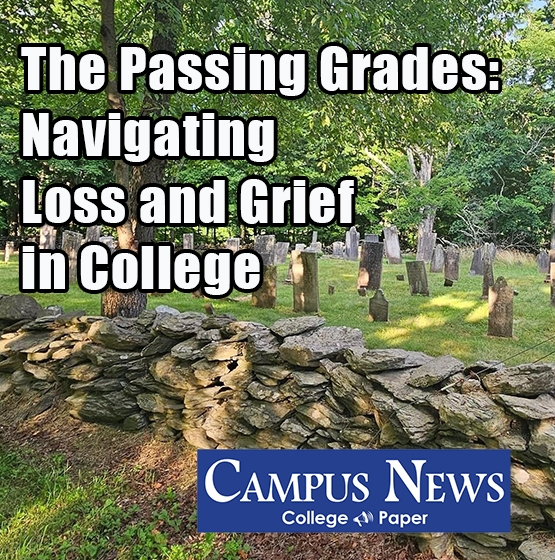By Yesenia Coello
Campus News
Not everyone likes math. It has a reputation as a monotonous, uninventive subject that doesn’t have an obvious impact on its environment. But what if we’ve been approaching math wrong this whole time? Have we been defiling a thing of true beauty with our own limited perception? I talked with Richard Ruscyzk, the founder of the Art of Problem Solving website and former USA Mathematical Olympiad winner (1989), about this and got his insight into this situation and why the truth of the matter is more nuanced than it is commonly interpreted as.
YC: What has led us to this point? It’s no secret that many American students struggle with math. Is there a failing in the way we educate youngsters? Would you say it’s more of a systematic issue or that teachers aren’t just teaching math in an effective manner?
RR: Part of the issue of why “kids don’t like math” is because students are given narrow understanding of what math actually is. It starts in elementary school where math is presented as a set of routines to be mastered instead of this beautiful, engaging exploration of what can be accomplished with a few sets of rules. And that is why some kids view math as a cold, dry, and boring subject. Math isn’t viewed as a creative discipline, but the greatest mathematicians are just as creative as the greatest musicians and poets.
But in elementary school, the focus is on arithmetic and getting the right answer every right every time. Math is not about getting the right answer all the time. Math is a process of discovery. When kids focus on solely getting the right answer, it’s not conducive to generating interest.

RR: Thankfully, this isn’t how math works at the college level. Even at the top universities, nobody gets a 100% every time. Most people never even score above 90%. The average numbers are usually in the 60s, low 70s, and high 50s. The reason for this is because at this level we are educating future practitioners, and we know they won’t be doing the same thing over and over again. We have machines for that now. We need people who can create new knowledge, and we create them by presenting them with problems they’ve never encountered before. That is what should be the focus of a math education.
YC: From my understanding, higher-level math is more conceptual and abstract than simply solving number problems. Do you see this disparity in ideas as an issue when trying to understand why Americans struggle in math?
RR: It’s not so much that I want to teach kids from a theoretical basis when they’re very young. We need to be giving them interesting, challenging problems. In our elementary school curriculum, we have two individuals who were members of the U.S National Puzzle Team. They contribute to our curriculum by crafting puzzles that are a part of our curriculum. Students are going to have to do those calculations in order to complete the puzzles. In their minds, the key steps for solving the puzzles is trying to figure out what to do next. It’s the same kind of thing they would be doing when playing a sport or a video game. They’re confronted with a situation and are trying to figure out what the right step to take is.
In typical math education, we tell them what to do and then have them execute it. When you actually know what you need to do, you’re motivated to solve problems.
Some of the games that I’ve seen that are good at generating math interest are card games. Blockus is also a great game for spatial, geometric learning. There are a lot of games like this where kids aren’t learning formal mathematical skills, but they are problem-solving. They’re trying to see patterns and develop strategies. A lot of European-style board games are also conducive at promoting this sort of thinking.
YC: How do we stack up against other countries? What initiatives are being taken abroad to promote math literacy?
RR: I don’t know how to interpret the data that those countries are actually performing better than the United States. And that’s because I don’t know much behind the methodology of how those tests are administered. It’s not clear who’s taking the tests or what the incentives behind them are. Other countries are also very different in their composition and goals of their education systems.
Broadly speaking, I think there are two goals to education. The first is broad literacy. By broad I mean, we’re targeting everybody and we’re targeting a lot of topics. Not just math and reading, we want some fundamental literacy in history, science, economics among other subjects. And that is what most of the incentives in the American system are set up for. Probably almost all of them are set up for this broad literacy. And I don’t want to say this goal is not important, but there’s a second important goal to education, one that the American system doesn’t focus on much at all, and that’s mastery. We want to empower individuals to find the subjects that most resonate with them and then deeply master those areas. The American education system is not set up for this at all. This is critical because it’s the masters who are going to push the boundaries of what they’re studying.
One of the good things about the American system is that there are multiple avenues for success. For students who get off track for whatever reason, there are paths back into the education system. The United States has won the International Math Olympiads four of the last six years, and these are the reasons why the United States can win these Olympiads. The problem is that these paths are only available to students who are in networks where these paths are accessible to them, and who have the resources to afford to go onto those paths.
YC: Can we adopt these ideas into our current system or do you believe there needs to be a giant overhaul as to how we teach math in this country?
RR: We need to be open to trying a lot of different things. Different resources will work for different students and different schools. One very important step would be structuring incentives to value these paths to mastery. With the system currently in place, schools have no incentive to develop students’ talents beyond a certain point. The focus is just on reaching a goal, and there’s no real incentive for students to pursue mastery. The system isn’t well designed for empowering teachers beyond reaching literacy-based goals.
Unfortunately, it seems like we’re moving in the opposite direction. We’re trying to remove pathways to mastery. Most places are doing this out of equity concerns, and I don’t think it’s the right solution. The right solution is to find more pathways for students who are not on track. We need to start early
One thing is that these international test scores make for much better headlines than they do for analysis. Second, is to understand the importance of embracing mastery as a goal. The brains behind the COVID-19 vaccines were able to create them thanks to the specialization and interest that young scientists developed when they were still in the education system. Same thing with the sports athletes of today. We need to keep a close eye on students who would benefit from gaining mastery.
Photo credit: By Art of Problem Solving – Own work, CC BY-SA 4.0, https://commons.wikimedia.org/w/index.php?curid=72149920







Facebook Comments